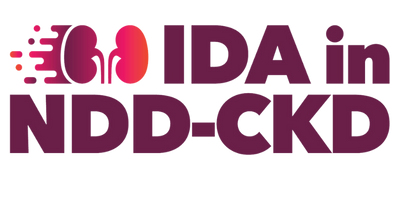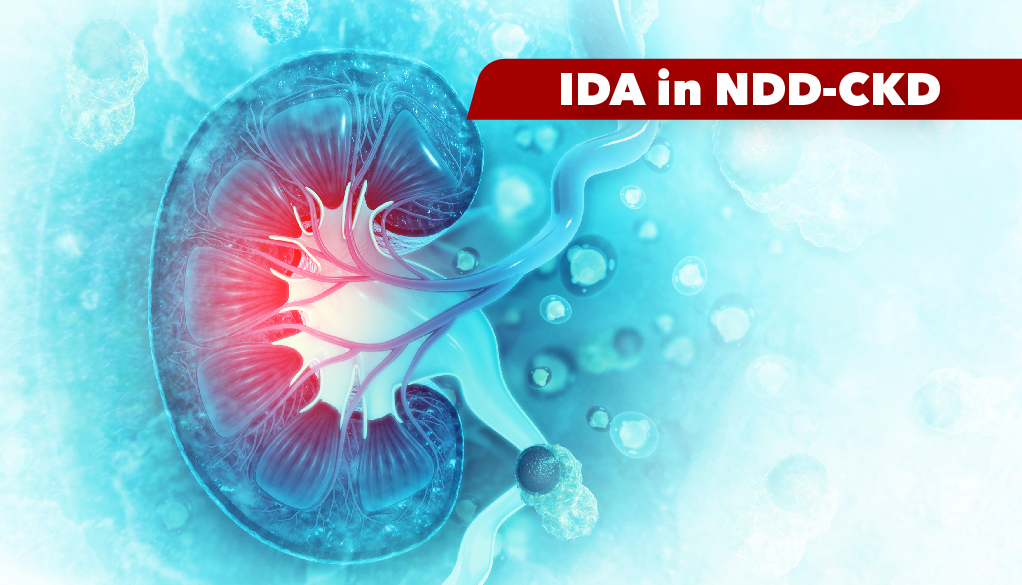In patients with chronic kidney disease (CKD), iron deficiency anemia (IDA) is a common complication that is linked to poor outcomes and its prevalence increases as CKD progresses. Patients with CKD and IDA remain largely untreated.1 Deficiency of erythropoietin production is the main cause of anemia in CKD. Iron deficiency stands out among the processes causing reduced erythropoiesis in impaired kidney function. Anemia in CKD is significantly influenced by iron shortage. An actual lack of iron stores (absolute iron deficiency) or a relative (functional) deficiency that prevents use of available iron could be the cause.2 Absolute and functional iron deficiency in CKD is caused by a number of risk factors, including chronic inflammation, poor iron absorption, and blood losses. The limitations of the conventional biomarkers used to diagnose IDA in patients with CKD make it difficult to detect and track IDA in these patients.2
MANAGEMENT OF IRON DEFICIENCY ANEMIA IN PATIENTS WITH CKD
The clinical management of anemia in CKD includes erythropoiesis-stimulating agents (ESAs) and iron replacement therapy using oral and intravenous (IV) formulations. Transfusions of red blood cells are frequently utilized as a last resort, usually in emergency situations.1 KDIGO (Kidney Disease: Improving Global Outcomes) guidelines recommend correcting all causes of anemia prior to ESA use, and considering ESA use only if Hb ≤10.0 g/dL. Anemia treatment with ESAs should only be implemented when the patient is iron replete.1 In adult patients with anemia who are not on iron therapy or ESA and with transferrin saturation (TSAT) ≤30% and ferritin ≤500 ng/mL, KDIGO guidelines recommend a trial of IV iron or a 1-3 month trial of oral iron therapy. For patients on ESAs with a TSAT of ≤30% and ferritin ≤500 ng/mL and when an increase in Hb levels or a reduction in ESA dosage is desired, a trial of IV iron or a 1-3 month trial of oral iron therapy is recommended.2
EVIDENCE FOR INTRAVENOUS IRON USE IN IRON DEFICIENCY ANEMIA IN PATIENTS WITH CKD
IV iron is typically far more effective than oral iron. It is a standard of care for those receiving hemodialysis. In the US, the most popular treatment for these patients is iron sucrose, which is often administered at doses of 50 to 100 mg/wk as needed. Iron dextran, ferric gluconate, ferumoxytol, ferric carboxymaltose (FCM), and iron isomaltoside are other available IV iron dosage forms. All of these IV iron forms work well. The main difference is that when compared to iron sucrose and ferric gluconate, forms like FCM allow for the delivery of a greater volume of iron in a single dose. This allows for less frequent hospital and clinic visits, a great benefit to most patients with non-dialysis-dependent (NDD)-CKD.3 FCM is approved for the first-line treatment of adult patients with NDD-CKD.4
IV iron use is challenging in patients with NDD-CKD and those receiving peritoneal dialysis because IV access must be established. As a result, patients may begin taking oral iron supplements in place of or ahead of receiving IV iron therapy. When administering these patients with IV iron, it is important to correctly monitor them for the emergence of hypo tension or hypersensitivity reactions. Additionally, it is important to take precautions in these patient populations to protect veins that may one day be required to develop vascular access for hemodialysis.3
Although IV iron therapy is quite effective, its safety has not yet undergone a thorough evaluation. As a result, when making treatment decisions, professionals are unable to adequately weigh the trade-offs between benefit and risk. The KDIGO recommendations assist in ensuring effective care while minimizing hazards. One issue with safety has been the potential for IV iron to increase the availability of iron to bacteria and other microbes. Therefore, it is advised to cease administering IV iron during acute illnesses, especially when bacteremia is present. It is always possible to safely delay iron deficiency treatment.
ORAL IRON FORMS ADVERSE EFFECTS AND INADEQUACY
Novel oral iron preparations are required because existing oral iron treatments are ineffective due to poor absorption and their common gastrointestinal side effects, and their effectiveness lessens as their CKD progresses. Ferric citrate is a novel oral iron-repletion drug that showed improvements in hemoglobin levels and iron parameters in patients with NDD-CKD, and showed high tolerability in these patients. Two more innovative oral iron preparations being developed for IDA in patients with CKD include ferric maltol, which is approved in Europe and the US for IDA in adult patients, and sucrosomial iron, which has been tested in IDA associated with CKD and various other clinical conditions. These novel iron agents need further trials for their effectiveness as iron-repletion agents.1
KEY TAKEAWAY IN TREATMENT OF IRON DEFICIENCY ANEMIA IN PATIENTS WITH NON-DIALYSIS-DEPENDENT CKD
- Iron supplementation is available via the oral or intravenous (IV) route. A trial of iron for 1 to 3 months is recommended in patients with anemia and NDD-CKD.5
- Oral iron may be used, if tolerated, in patients with NDD-CKD.5
- IV iron has a safety profile comparable to that of oral iron, with more infusion reactions and fewer gastrointestinal side effects.5
- FCM is a newer IV iron preparation given at a dose of 500mg to 1000mg once or twice per week.5
- The benefit of IV iron outweighs the risks in CKD, and IV iron is preferred in patients with NDD-CKD.5
Anemia in patients with CKD is frequently caused by iron deficiency, which is easily treatable. The KDIGO guidelines advise weighing the potential benefits of avoiding or minimizing blood transfusions, ESA therapy, and anemia-related symptoms against the potential risks of iron supplementation due to the limitations of TSAT and ferritin in establishing iron deficiency in patients with anemia of CKD. For the treatment of IDA in CKD, a variety of well-established treatments are available, including both oral and IV formulations. KDIGO guidelines recommend IV formulations for individuals with stable CKD. It is important to consider the patient’s comfort and accessibility while determining the IV iron dose and frequency.3
References
- Pergola PE, Fishbane S, Ganz T. Novel Oral Iron Therapies for Iron Deficiency Anemia in Chronic Kidney Disease. Adv Chronic Kidney Dis. 2019;26(4):272-291. Doi:10.1053/j.ackd.2019.05.002
- Batchelor EK, Kapitsinou P, Pergola PE, et al. iron Deficiency in Chronic Kidney Disease: Updates on Pathophysiology, Diagnosis, and Treatment. JASN. March 2020, 31 (3) 456-468;
doi.org/10.1681/ASN.2019020213 - Fishbane S, SPinowitz B. Update on anemia in ESRD and earlier stages of CKD: Core curriculum 2018. AM J Kids Dis. 2018;71(3):423-435. doi:10.1053/j.ajkd.2017.09.026
- Injectafer. Prescribing information. Daiichi Sankyo;2019. Accessed September 14, 2020. https://daiichisankyo.us/prescribing-information-portlet/getDocument?product=IF&inline=true
- Gafter-Gvili A, Schechter A, Rozen-Zvi B. Iron Deficiency Anemia in Chronic Kidney Disease. Act Haematol. 2019;142(1):44-50. Doi:10.1159/000496492.


